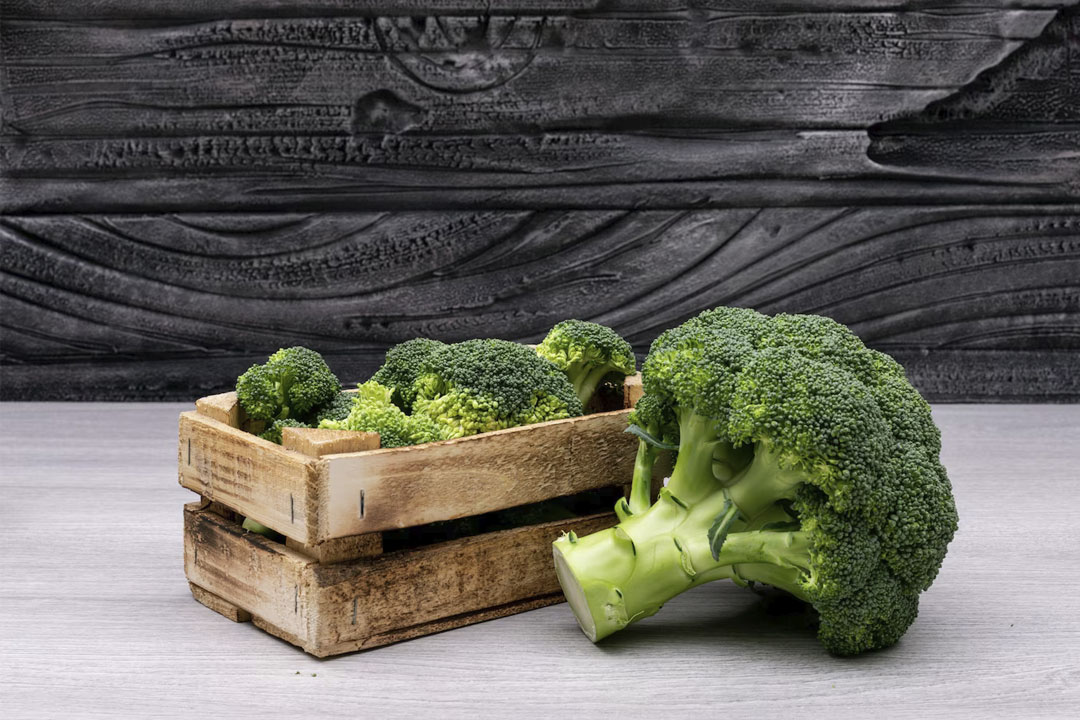
Broccoli is a nutritious vegetable that is rich in vitamin C, fiber, and protein. It is known as a “superfood” and belongs to the Brassica genus, which includes cabbage, Brussels sprouts, and cauliflower. There are three types of broccoli: large-headed, sprouting, and Romanesco. Broccoli is easy to grow and can produce bountiful crops during the cool weather of winter. Here is a detailed step-by-step guide on how to grow broccoli:
- Site selection: Broccoli grows best in medium to medium-heavy clay loam soils with good water holding capacity. However, it can also grow in sandy soils but will require more frequent irrigation and higher fertilizer rates. The pH levels should be between 5.8 to 6.5 as broccoli likes an alkaline soil. Broccoli responds well to compost and organic-enriched soils. Prepare the soil with compost or farmyard manure at levels of 25-35 tons per hectare before planting. Chicken litter can also be used at 2-5 tons per hectare but must be well composted. Plow the soil to a depth of 30-35cm to ensure good root development, or rip and disc the soil to prepare a fine tilth.
- Spacing: Planting on beds that are 1.5m center-to-center, space the in-row 30cm apart, and two rows placed on the bed 50-60cm apart. This gives approximately 44,000 plants per hectare. Planting on the flat, rows can be 40cm apart, and the in-row space 35cm apart. Higher plant populations give smaller heads, so populations should be determined by market requirements.
- Fertilizer: Broccoli can be susceptible to hollow stem problems caused by a boron deficiency. Apply Solubor as a foliar spray every two weeks at a rate of 10grams/1 liter of water if there is a boron deficiency in the soil. Apply a balanced basal type fertilizer of either “A”, “B”, or “C” before planting. Use a vicon spreader to broadcast the fertilizer on the flat or a ridger-type applicator if the crop is grown on beds. Cupping with fertilizer cups by hand into the pre-marked planting holes can also be done but the fertilizer must be well mixed in the hole with the soil to prevent root burn. Based on soil analysis results, adjust the rates of fertilizer to be applied, and if compost or manure has been applied, the rate can also be reduced. Apply fertilizer rates of 500kg-750kg per hectare. Broccoli requires around 400kg per hectare of A.N. split into three applications from three weeks up to six weeks after transplanting. Extra top dressings might be required after heavy leaching rains if the crop is planted on sandier soils during the rainy season. Plantings going into mid-winter should be top-dressed with Calcium Nitrate instead of A.N. as it works quicker in cool soils.
- Seedlings: Planting with seedlings is the most practical method. Use a recognized nursery where strong and healthy seedlings are produced. Transplant good seedlings for a more uniform crop, which reduces costs at harvest time. Order around 10% more seedlings for your selected plant population from the nursery to ensure the best seedling selection when transplanting. When using seedlings, make sure good plug-to-soil contact is made so that the root system can leave the plug and quickly enter the soil enriched with either fertilizer or compost. Plant the seedlings as soon as possible after collecting them from the nursery to avoid the tiny hair roots from drying out.
- Harvesting: Broccoli heads should be harvested when they are firm, compact and green in color. Once the head has begun to loosen and the buds are starting to show, it is too late to harvest. When harvesting, use a sharp knife or shears to cut the head off about 10-15cm below the head. This will allow for side shoots to grow and produce more broccoli. The ideal time for harvesting is in the morning when the heads are still cool from the night. If the heads are harvested in the heat of the day, they tend to wilt and become limp, making them unappealing to buyers.
- Marketing: Broccoli is a highly demanded vegetable and can be sold fresh or frozen. It can be marketed to wholesalers, retailers, and local markets. To ensure a steady supply of broccoli throughout the season, stagger the plantings every two weeks. This will ensure that you have a continuous supply of broccoli throughout the season. Develop a marketing strategy before harvesting to ensure that the broccoli is sold as soon as possible after harvesting to avoid spoilage.
- Pests and Diseases: Broccoli can be attacked by a range of pests and diseases. Some common pests include aphids, caterpillars, diamondback moths, and flea beetles. To control pests, use biological control methods such as introducing natural predators or using insecticides when necessary. Diseases such as black rot, clubroot, and downy mildew can also affect broccoli. To prevent diseases, practice crop rotation, keep the soil moist but not waterlogged, and avoid over-fertilizing.
Conclusion: Growing broccoli can be a profitable venture for African farmers, especially during the cool weather conditions of winter. By following the steps outlined in this guide, farmers can produce bountiful crops of broccoli that are rich in nutrients and flavor. It is important to consult a Seed Co Agronomist for advice on the best varieties for winter and summer production, as well as for guidance on pest and disease control. With proper care and attention, broccoli can be a valuable addition to any farmer’s crop rotation.


















